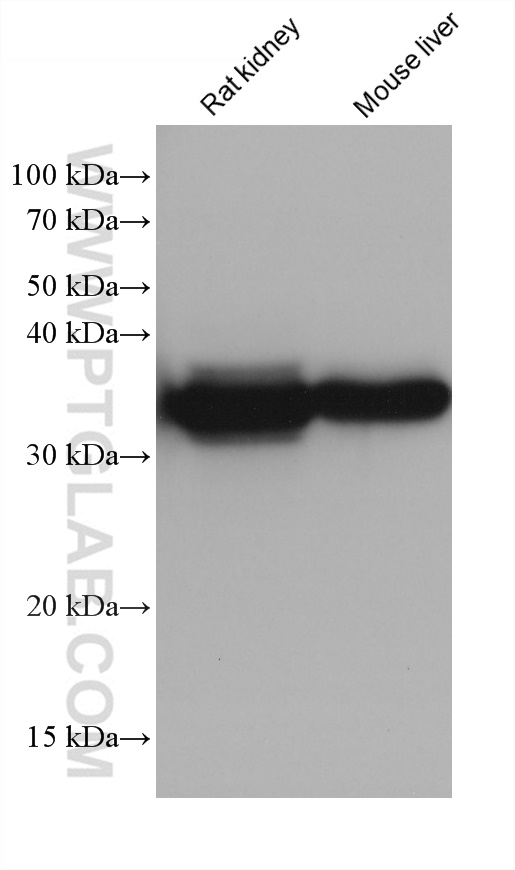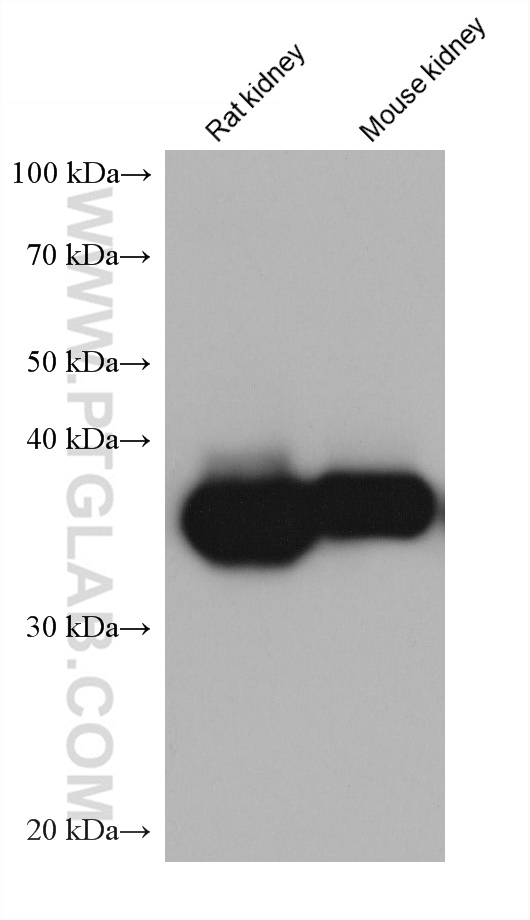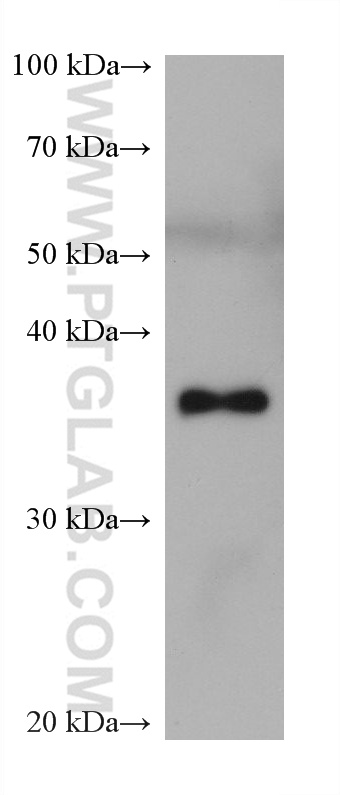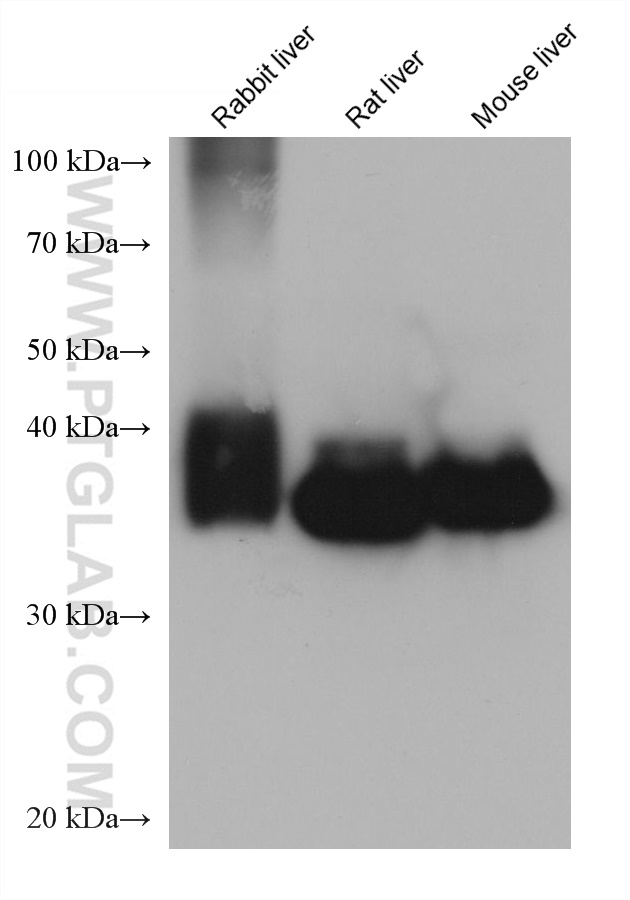验证数据展示
经过测试的应用
| Positive WB detected in | rat kidney tissue, human urine sample, rabbit liver tissue, rat liver tissue, mouse liver tissue, mouse kidney tissue |
| Positive IF/ICC detected in | HepG2 cells |
推荐稀释比
| 应用 | 推荐稀释比 |
|---|---|
| Western Blot (WB) | WB : 1:5000-1:50000 |
| Immunofluorescence (IF)/ICC | IF/ICC : 1:400-1:1600 |
| It is recommended that this reagent should be titrated in each testing system to obtain optimal results. | |
| Sample-dependent, Check data in validation data gallery. | |
产品信息
68396-1-Ig targets ALDOB in WB, IF/ICC, ELISA applications and shows reactivity with Human, mouse, rat, rabbit samples.
| 经测试应用 | WB, IF/ICC, ELISA Application Description |
| 经测试反应性 | Human, mouse, rat, rabbit |
| 免疫原 | ALDOB fusion protein Ag12823 种属同源性预测 |
| 宿主/亚型 | Mouse / IgG2a |
| 抗体类别 | Monoclonal |
| 产品类型 | Antibody |
| 全称 | aldolase B, fructose-bisphosphate |
| 别名 | ALDB, ALDOB, Liver type aldolase |
| 计算分子量 | 316 aa, 35 kDa |
| 观测分子量 | 35-40 kDa |
| GenBank蛋白编号 | BC029399 |
| 基因名称 | ALDOB |
| Gene ID (NCBI) | 229 |
| RRID | AB_3085113 |
| 偶联类型 | Unconjugated |
| 形式 | Liquid |
| 纯化方式 | Protein A purification |
| UNIPROT ID | P05062 |
| 储存缓冲液 | PBS with 0.02% sodium azide and 50% glycerol , pH 7.3 |
| 储存条件 | Store at -20°C. Stable for one year after shipment. Aliquoting is unnecessary for -20oC storage. |
背景介绍
Fructose-1,6-bisphosphate aldolase is a glycolytic enzyme that catalyzes the reversible conversion of fructose-1,6-bisphosphate to glyceraldehyde 3-phosphate and dihydroxyacetone phosphate.Vertebrates have 3 aldolase isozymes, aldolase A (ALDOA), B (ALDOB), and C (ALDOC). Deficiency of this enzyme ALDOB causes an accumulation of fructose-1-phosphate after fructose intake, which results in toxic symptoms like vomiting, hypoglycemia, jaundice, elevated liver enzymes and hepatomegaly(PMID:22375183). This antibody may detect ALDOA.
实验方案
| Product Specific Protocols | |
|---|---|
| WB protocol for ALDOB antibody 68396-1-Ig | Download protocol |
| IF protocol for ALDOB antibody 68396-1-Ig | Download protocol |
| Standard Protocols | |
|---|---|
| Click here to view our Standard Protocols |




